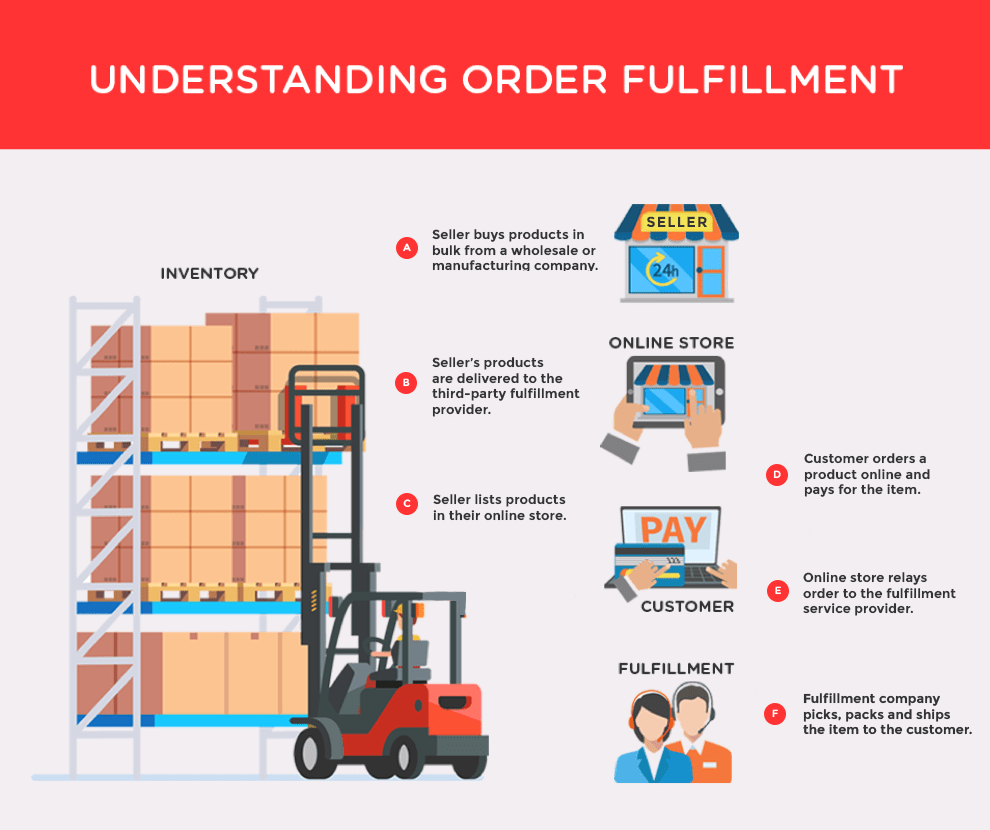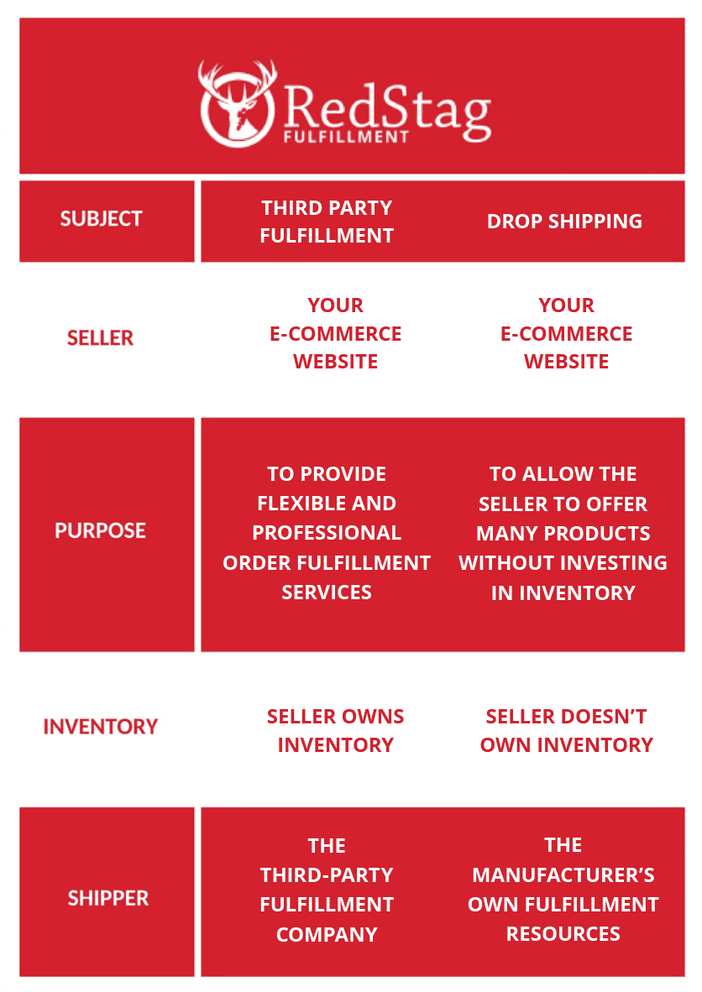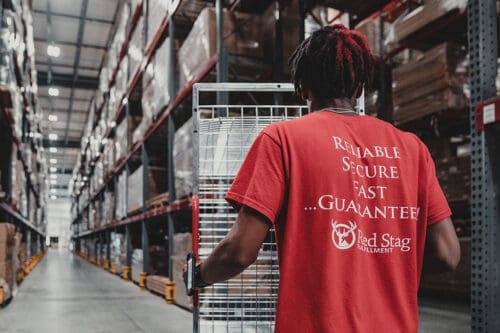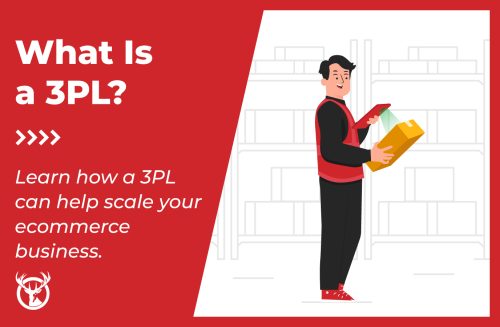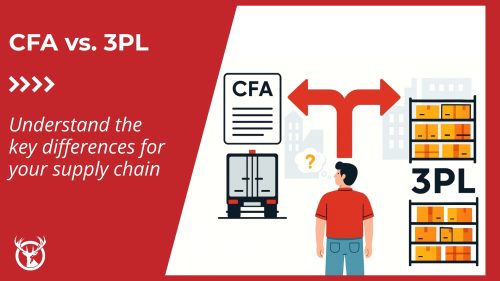When you hear the phrase “drop shipping fulfillment” for the first time, you might think this is another word for third-party logistics. Drop shipping does allow eCommerce businesses to have a third party ship products to customers, but the services provided by drop shippers and fulfillment centers are quite different.
While it is true that both third-party and drop shipping fulfillment involve an outsourced order fulfillment process, they are quite different eCommerce business models.
We’ve written this article to help eCommerce business owners understand third-party and drop shipping fulfillment, so you can decide which of the two is more suitable for your business.
Before comparing the pros and cons of each approach, it’s helpful to clearly understand drop shipping and third-party fulfillment.
This article was originally published in Sept. 2018. We’ve updated it on July 2, 2021 with new information about drop shipping and 3PL service providers.
What is third-party fulfillment?
Third-party fulfillment (also sometimes called third party shipping) is an outsourced fulfillment solution where you engage a service company to store merchandise, pick and pack orders, and handle the logistics of shipping to customers on your behalf. These companies are called third-party logistics providers, or 3PLs.
The key to understanding third-party fulfillment is that the seller buys their inventory in bulk. Then, they contract with a fulfillment warehouse to handle all aspects of order fulfillment. This option is suitable for a seller who doesn’t have a warehouse of their own but wants to keep their own inventory.
- You buy products in bulk from a manufacturer or distributor.
- You list the products in your online shop. Before you list products for sale, they should already be at the third-party shipping warehouse.
- When a buyer places an order, you contact your third-party fulfillment company to process the order, pack the product, and arrange for delivery to the buyer.
Engaging a third-party fulfillment service is a good choice for eCommerce sellers who have enough capital to purchase and maintain inventory. It is also great for sellers who are confident that their inventory will turn over quickly. Finally, it is great for eCommerce businesses that would like to outsource their storage and the logistics of order fulfillment.
To give you a better idea of third-party fulfillment’s definition, here is a visualization of the order fulfillment cycle with a third-party fulfillment services provider.
The process for third-party fulfillment is as follows:
What is drop shipping fulfillment?
In a drop shipping fulfillment arrangement, the online seller offers products for sale that have not been purchased or placed into inventory by the seller (see our drop shipping guide). The seller contracts with the manufacturer to drop ship orders directly to the seller’s customers.
In this setup, the seller doesn’t have the expense of holding inventory for their eCommerce business. The tradeoff is that the manufacturer will charge the seller a higher wholesale price for each item. That’s because they’re the warehouse and fill orders instead of shipping bulk freight to the seller. Although the eCommerce seller hasn’t purchased any products, it looks like they are selling their products. The seller handles marketing and customer service, while the manufacturer provides warehouse and shipping services.
The process for drop shipping fulfillment is as follows:
- You place items offered by one or more drop shipping companies in your online shop.
- A customer places an order in your shop.
- You forward the order to the manufacturer for drop shipping.
- The manufacturer processes the order and ships it directly to your customer.
With a drop shipping fulfillment arrangement, there is no need for the seller to purchase inventory. This is a crucial feature of drop shipping for eCommerce businesses.
Using drop shipping is great for sellers who don’t have the capital to purchase inventory or don’t want to invest in storage and logistics. It can be an excellent way to offer a broader selection of products. It can also be a low-risk way to test a new product to see if it will sell enough to justify bringing it into inventory.
Here is a visualization of a drop shipping fulfillment cycle.
Differences Summed Up
To recap the differences between third-party and drop shipping fulfillment, here are some concrete areas to consider:
A) Seller
The customer can’t tell the difference between third-party shipping and drop shipping fulfillment. The only clue is the return address on the package they receive
Drop shipping is a tradeoff between capital outlay and profit margin on each sale for the seller. You don’t need upfront cash when you enter a drop shipping arrangement with a manufacturer or distributor. When you work with a third-party fulfillment provider, you will need to purchase inventory before reselling it to customers. When you buy inventory up front, you generally pay a lower price and have a higher profit margin.
B) Purpose
Another difference is visible when looking at the business purpose of your partner.
In a drop shipping fulfillment arrangement, the manufacturer doubles as the fulfillment provider. One way to look at drop shipping is that the seller is the marketer for goods that the manufacturer owns. The seller gets a cut of each order the manufacturer ships in exchange for marketing and customer service.
On the other hand, a third-party fulfillment company focuses on storing and delivering the seller’s products. Third-party fulfillment providers can offer additional services, such as customer service and processing returns. These generally aren’t available to sellers who rely on drop shipping arrangements.
C) Inventory
The third-party fulfillment warehouse stores the inventory that your eCommerce business owns.
A seller using drop shipping fulfillment does not own any inventory of the products offered for sale on their website.
D) Shipper
In drop shipping, the product manufacturer or distributor sends individual orders directly to your customers.
When you use a 3PL, the fulfillment warehouse ships orders to your customers. 3PLs specialize in packing and shipping orders; it’s all they do.
Digging further into 3PL and drop shipping fulfillment differences
Aside from merely looking into the fundamental differences, it’s also a good idea to compare other aspects of third-party fulfillment and drop shipping.
1. Third-party shipping and drop shipping fulfillment provide different levels of service to sellers
When you use a drop shipping business model, the drop shipper will ship out your orders, but not much else. Drop shippers specialize in manufacturing or distributing products to a wholesale market, not fulfillment services for retail customers. You will need to make sure that your customer service is robust, so you can handle any problems that occur between the manufacturer and your customers.
By contrast, a third-party fulfillment provider is a packing and shipping specialist. Your 3PL is likely to offer extra services such as helping manage returns, handling customer service requests, and expert advice to help you ship your orders efficiently and cost-effectively.
2. You outsource your shipping to a different type of provider
Third-party and drop shipping fulfillment both involve outsourcing your order fulfillment to another company. When you work with a drop shipper, the manufacturer or distributor of that product sends it directly to customers. You don’t own the product until you relay an order from your website to the drop shipper. At that point, you make the purchase, and the drop shipper packs and sends the order to your customer.
When you outsource your warehousing and order delivery to a third-party fulfillment warehouse, the inventory you own is stored and shipped from a fulfillment center that is in the business of warehouse services and order fulfillment. You must buy the inventory before any customer orders from your store.
3. Third-party and drop shipping fulfillment solve different challenges for eCommerce sellers
Drop shipping may be a good choice for a small eCommerce seller or someone just starting an online store. Drop shipping can allow you to offer more products with little capital outlay. When you drop ship instead of buying inventory, you can try new items without risk; if they don’t sell, you have lost nothing.
Third-party fulfillment is an excellent choice for more mature eCommerce companies that know their markets and want to save money on wholesale inventory pricing. You’ll also see reduced shipping costs by working with a professional fulfillment provider. Sellers who have outgrown their capacity to process orders in-house look to 3PLs to extend operations and make it easier to grow.
These two fulfillment options address the challenges of starting and running an online business in different ways:
1. Limited capital
For businesses that do not want to invest capital in inventory, drop shipping fulfillment makes it easy to get started. However, those who can afford to carry inventory and want to handle their storage and logistics professionally and efficiently find third-party fulfillment a wise choice.
2. Limited reach
If you want faster shipping to customers from multiple locations, a 3PL can help bring products closer to customers. When you use a 3PL, you can choose a company with warehouses in strategic locations that allow for fast, low-cost shipping to customers.
A drop shipper may have only one location. They often choose it for the convenience of manufacturing merchandise, without consideration for shipping distance.
3. Limited grasp on sales outlook
Projecting your future sales is essential to your business. It’s also a big challenge. When you work with a third-party shipper, you don’t have to invest in setting up and maintaining your own warehouse space. Outsourcing fulfillment also gives you the flexibility to increase or shrink the amount of warehouse space you use as your business grows or contracts.
On the other hand, drop shipping helps manage uncertainties in the sales performance of specific products because, instead of maintaining huge inventories, you place orders with the drop shipping company as orders come in through your website. You never run the risk of holding inventory that doesn’t sell.
Which is better for your eCommerce business?
Third-party and drop shipping fulfillment fill different needs for eCommerce sellers. Your business may choose to outsource your fulfillment to both types of providers at different times, as your business needs change.
You may even use both simultaneously. You could fulfill established product orders through a 3PL, then use drop shipping fulfillment to test new products.
The pros and cons of third-party shipping and drop shipping fulfillment
To help you choose the right solution for you, here are some pros and cons of both third-party fulfillment and drop shipping.
Pros of 3PLs
Third-party fulfillment allows you to have control over your inventory
A fulfillment warehouse gives you storage capacity to maintain an inventory of your products for sale. You can accurately track your inventory, so you never sell a product that isn’t on the shelf and ready to ship.
Third-party fulfillment can provide shorter ship times for your customers
When you partner with a fulfillment center, you can choose a centrally located facility that will reach all or most of your customers in two days or less. Since two-day shipping is now standard, this will allow your eCommerce business to compete on a level playing field with larger companies’ order fulfillment.
Your storage expenses are variable
Since you are merely renting storage space, you don’t have to maintain fixed storage assets; you only pay for the space you need. This is more efficient than having a fixed storage space that you must sustain all the time.
Cons of third-party fulfillment
Your product line is limited to inventory on-hand
With third-party fulfillment, you are can only sell inventory that you have purchased. You assume the risks if something doesn’t sell and carry the storage costs if a product doesn’t turn over quickly.
Your capital is tied up in your inventory
While your profit margin will be higher when you sell your own inventory, you’ll need capital to purchase products before making a sale. This business model requires more investment from the seller initially, but can lead to higher margins.
You are responsible for your inventory
Many (though not all) 3PLs have an allowance (sometimes up to 10%) for lost and broken items. When you use a drop shipper, you never lose stock because the manufacturer or distributor owns and maintains the inventory. They’ll sell you a viable product when your customer places an order, so you’ve not bought something that’s sitting on the shelf and could be damaged before shipping.
Red Stag Fulfillment guarantees better inventory protection than those rates.
Pros of drop shipping fulfillment
You can start and run your business with less capital
Because you do not need to maintain your own inventory, the only cash you need to get started with drop shipping is the cost to build and maintain your eCommerce website.
Easier to expand SKU breadth
You can partner with multiple drop shipping manufacturers or distributors. This way, you can sell many different products. Since you don’t have to buy inventory, it’s easier to afford a much broader product line or even unrelated items.
You can take risks on untested products
With drop shipping, your online store can double as your market tester. You can bring in new products and try them out without much risk and with no financial outlay. Sometimes, the most unique products are the ones that become hits. Drop shipping fulfillment allows you to seek out those sleepers (though you probably won’t be able to get an exclusive on a hot product using drop shipping).
Drop shipping fulfillment cons
You’ll limit your profits
When you buy your inventory in bulk, you pay heavily discounted prices. The more you buy, the bigger the discount. When you use drop shipping fulfillment, you’re buying one product at a time from the manufacturer, so you’ll pay a premium each time. Your risk is low, but so are your profits.
You have less control over the availability of your products
When you work with a drop shipper, you rely on product availability from your partner. When supplies are limited, they may give priority to another company or their own direct customers. You can’t control the amount of inventory available for holiday or rush seasons.
Shipping can be slower and more expensive
When you work with drop shippers, you don’t control fulfillment locations or how quickly orders are processed. Your customers might have to wait days to receive a package. If you offer products from multiple drop shippers, the customer might receive their order in multiple packages from multiple instead of a single box. All of this can cost you extra money in shipping charges, time spent tracking multiple shipments, and time needed to resolve customer service issues. It may also harm your business reputation if you tout being eco-friendly in your marketing.
The Verdict: Drop shipping fulfillment and 3PLs meet different needs
There is a lot of confusion between third-party and drop shipping fulfillment services. Both drop shipping and third-party fulfillment have the potential to boost your business, but in different ways. Assessing your business needs, and updating them as they change over time, will help you decide which type of fulfillment service is best for you.
Either way, outsourcing your fulfillment can give your online retail business a boost. Give us a call, and we’ll help you decide if 3PL services are right for your business. Red Stag Fulfillment’s experts will help you determine what benefits you most based on your products, customers, and store.


